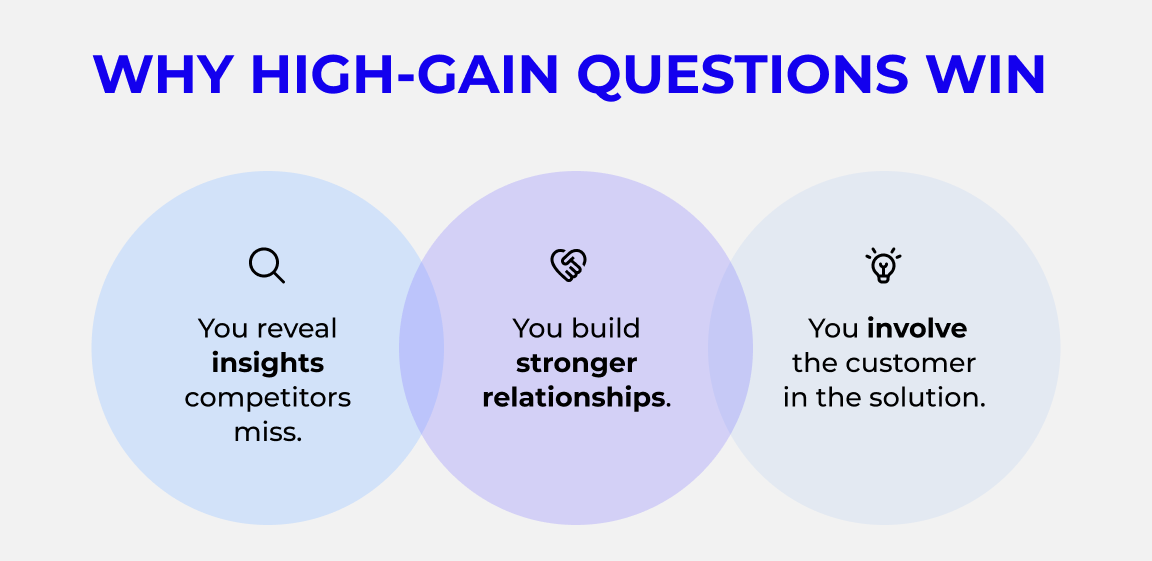Boost Sales with High-Gain Questions

Consultative Selling: High-Gain Questions & Active Listening for Real Results
Too many salespeople focus on pitching. But the top performers? They focus on understanding. That’s where consultative selling comes in—and it's powered by two skills: asking high-gain questions and active listening.
The Three Levels of Questions
If you want real insight, you need to go beyond basic questions. Here are the three levels of questioning in sales:
- Closed-Ended Questions
Example: “Are you the decision-maker?”
These are simple yes/no questions. They serve a purpose, but they offer limited insight. - Open-Ended Questions
Example: “How do you currently handle X?”
These invite dialogue and help you gather more context. - High-Gain Questions
Example: “What’s the biggest impact your current solution has on team morale or productivity?”
These probe for needs, priorities, frustrations, and goals—the stuff that drives decisions. They're designed to create value and uncover what truly matters to the buyer.

Why High-Gain Questions Win
Great questions aren’t just about getting answers—they're about building trust and co-creating solutions. Here’s what happens when you use them:
- 🔍 You reveal insights competitors miss.
Your competitor asked if they were satisfied. You asked why they weren’t—and now you know exactly how to tailor your solution. - 🤝 You build stronger relationships.
People want to be heard. When you show you care about more than a quick sale, they open up. - 💡 You involve the customer in the solution.
When your buyer helps define the problem, they’re more invested in your recommendation.

A Practical Shift in Your Questions
Instead of asking:
“Are you satisfied with your current provider?”
Ask:
“What concerns you most about your current breakroom service?”
The first gets a yes/no. The second gets you the real story—and a chance to differentiate your offering.
Final Thoughts
Consultative selling isn’t about closing deals—it’s about opening relationships. When you master high-gain questions and pair them with active listening, your conversations shift from transactional to transformational.
